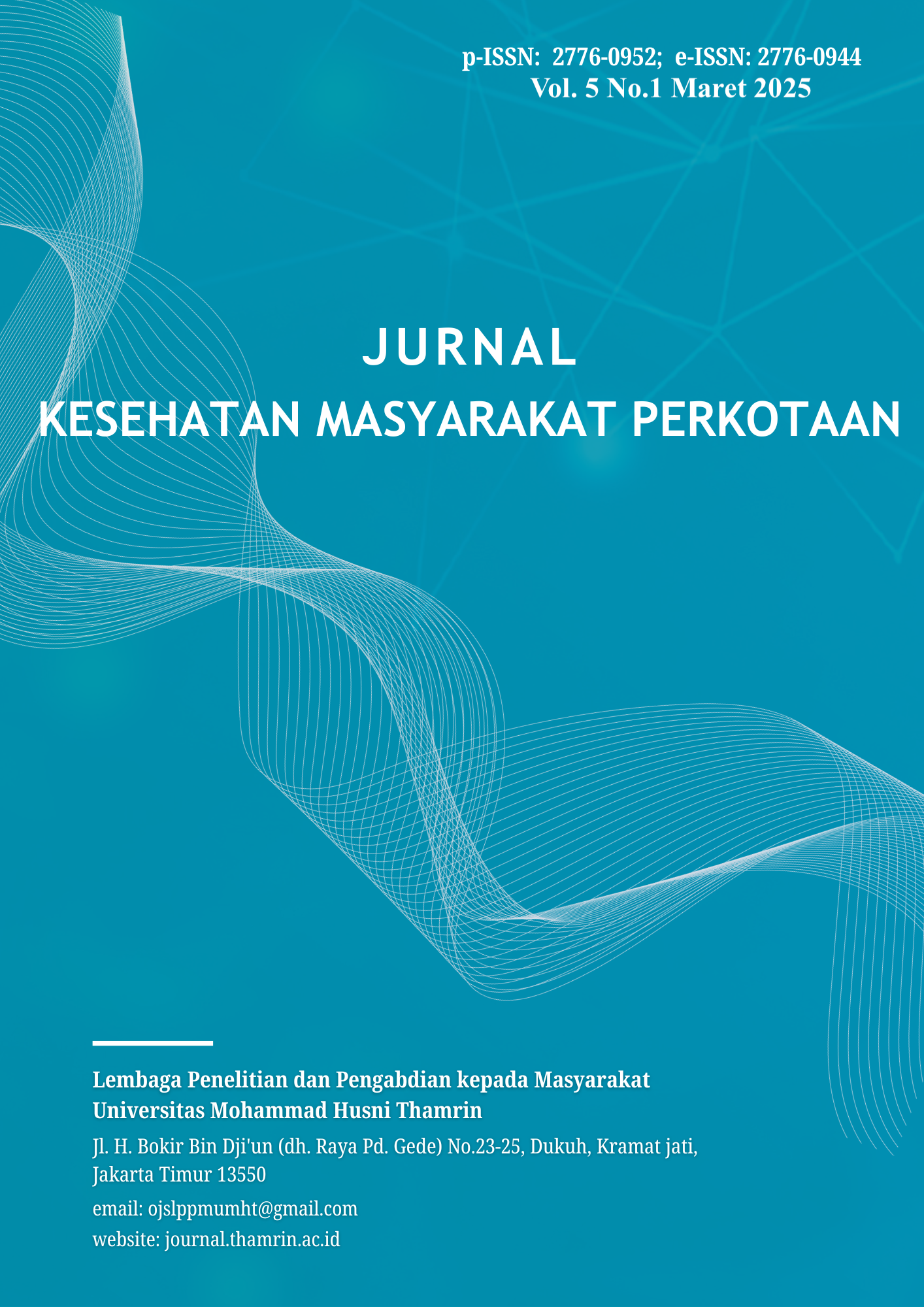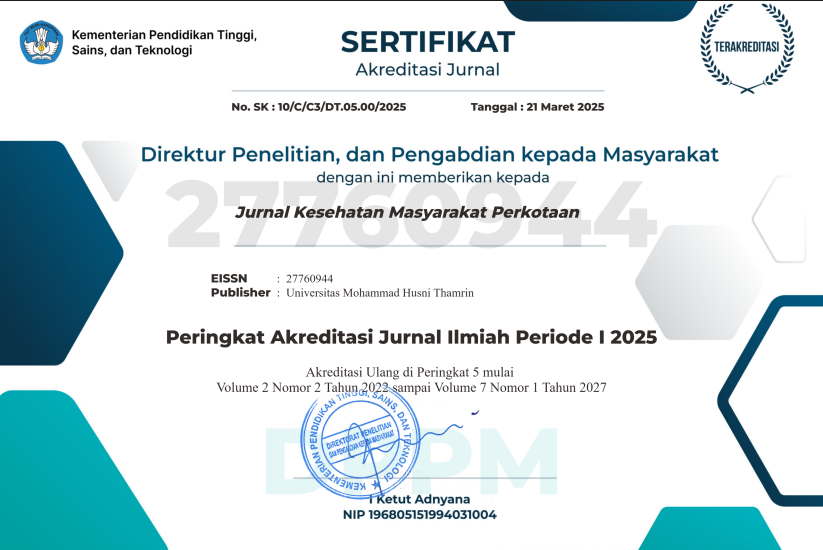The Effect of Lighting on Unsafe Conditions at PT. X
DOI:
https://doi.org/10.37012/jkmp.v5i1.2713Abstract
Occupational Safety and Health (OHS) is an important component in supporting protection for workers. Lighting is an essential physical element in the implementation of the Occupational Safety and Health (OHS) program. Light intensity that does not meet standards can cause visual fatigue, decrease worker concentration levels, and increase the risk of unsafe conditions in the workplace. This study aims to determine the effect of lighting on unsafe conditions at PT. X. This study uses a quantitative approach with a cross-sectional design, involving 80 respondents who were randomly selected using a simple random sampling technique. Data were collected through observation and questionnaires, then analyzed using a simple logistic regression test assisted by SPSS software. The results showed a statistically significant relationship between lighting and unsafe conditions (p = 0.002). Workers who work in areas with lighting levels that do not meet standards are 4.95 times more likely to experience unsafe conditions compared to those who work in areas with lighting according to regulations (Exp(B) = 4.951). Based on these findings, it is concluded that non-standard lighting significantly affects the occurrence of unsafe conditions, so it is necessary to adjust the lighting intensity in accordance with the Regulation of the Minister of Manpower No. 5 of 2018 in order to create a safer and more comfortable working environment.
Downloads
Published
How to Cite
Issue
Section
Citation Check
License
Copyright (c) 2025 Wulan Setyowati, Zufra Inayah

This work is licensed under a Creative Commons Attribution 4.0 International License.
Jurnal Kesehatan Masyarakat Perkotaan allows readers to read, download, copy, distribute, print, search, or link to the full texts of its articles and allow readers to use them for any other lawful purpose. The journal allows the author(s) to hold the copyright without restrictions. Finally, the journal allows the author(s) to retain publishing rights without restrictions Authors are allowed to archive their submitted article in an open access repository Authors are allowed to archive the final published article in an open access repository with an acknowledgment of its initial publication in this journal.

Lisensi Creative Commons Atribusi 4.0 Internasional.











